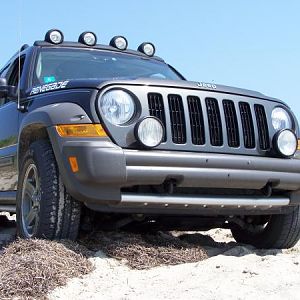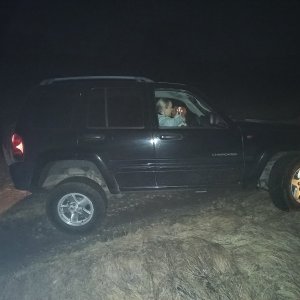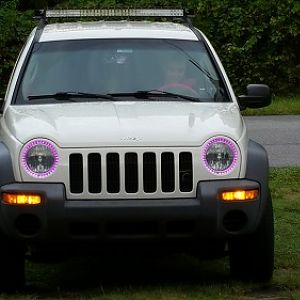Again, there are only three ways (four, only for off-road vehicles) to increase power, each involving increasing effective displacement of your infernally-combusted air pump - generally speaking:
- redesign for higher rpm to increase pumped volume\flowrate: theoretically, an engine pumping 200cfm @ 3000rpm will pump up to 400cfm @ 6000rpm - add more fuel = more power - requires revised camshaft, upgrading from 2v\cyl to 4v\cyl, intake and exhaust rework - would run at oem fuel flowrates under normal operation, but less low-end power requires more throttle input to compensate, so fuel economy suffers - besides, where would you use 6000rpm pulling a trailer cross-country, or sane off-roading?
- increase bore or\and stroke or add cylinders to increase pumped volume\flowrate: doubling displacement can result in engine that was pumping 400cfm @ 6000rpm, now pumping 800cfm @ 6000rpm - add fuel to suit, but requires increased fuel rates from idle to fwot, not conducive to overall fuel economy as increased dispacement results in increased overhead from friction - could work well for towing, if you also lowered final drive ratio to keep engine rpm down in the 1500-2000rpm range to take advantage of the increased torque
- increase pumped volume\flowrate externally: air is compressible, so turbocharged engine pumping 200cfm at Baro can pump up to 400cfm at 2xBaro, add fuel to suit - engine still runs at original 200cfm flowrates when not puffing, thus maintaining oem fuel economy, consuming additional fuel only on demand (that's right, folks: your go-pedal foot is usually the culprit)
On converting to turbocharged Diesel (always a good idea, imo), some states, now, with other states quickly signing on under Congressional\EPA mandate, offer considerable grief for engine conversions, particularly those concerning gasoline to Diesel - federally-mandated State-DOT vehicle inspections are computer-controlled via state-run intranet system, with test-settings derived directly from the attached VIN tag - no way to test a Diesel conversion with data polled from a gasoline-engine tag - the insp tech drives the vehicle onto the chassis dyno, kills the engine, gets out, chains the vehicle down, connects the various probes, connects the link to the vehicle DLC, scans the VIN tag with a laser pistol, hits ENTER - the computer starts the engine, runs a few checks and tests, signals the tech to place the trans in a specific gear range(s), and the tests continue from there until finished, with the tech following computer-instructed procedures - up till recently, Diesels were tested only for exhaust opacity - they are increasingly being tested from the VIN via the OBD2 DLC connector, with the 2006^ CAN-managed units running equivalent testing as the gasoline engines
Things are getting mighty tuff all around for us ole gearheads with better ideas.............










